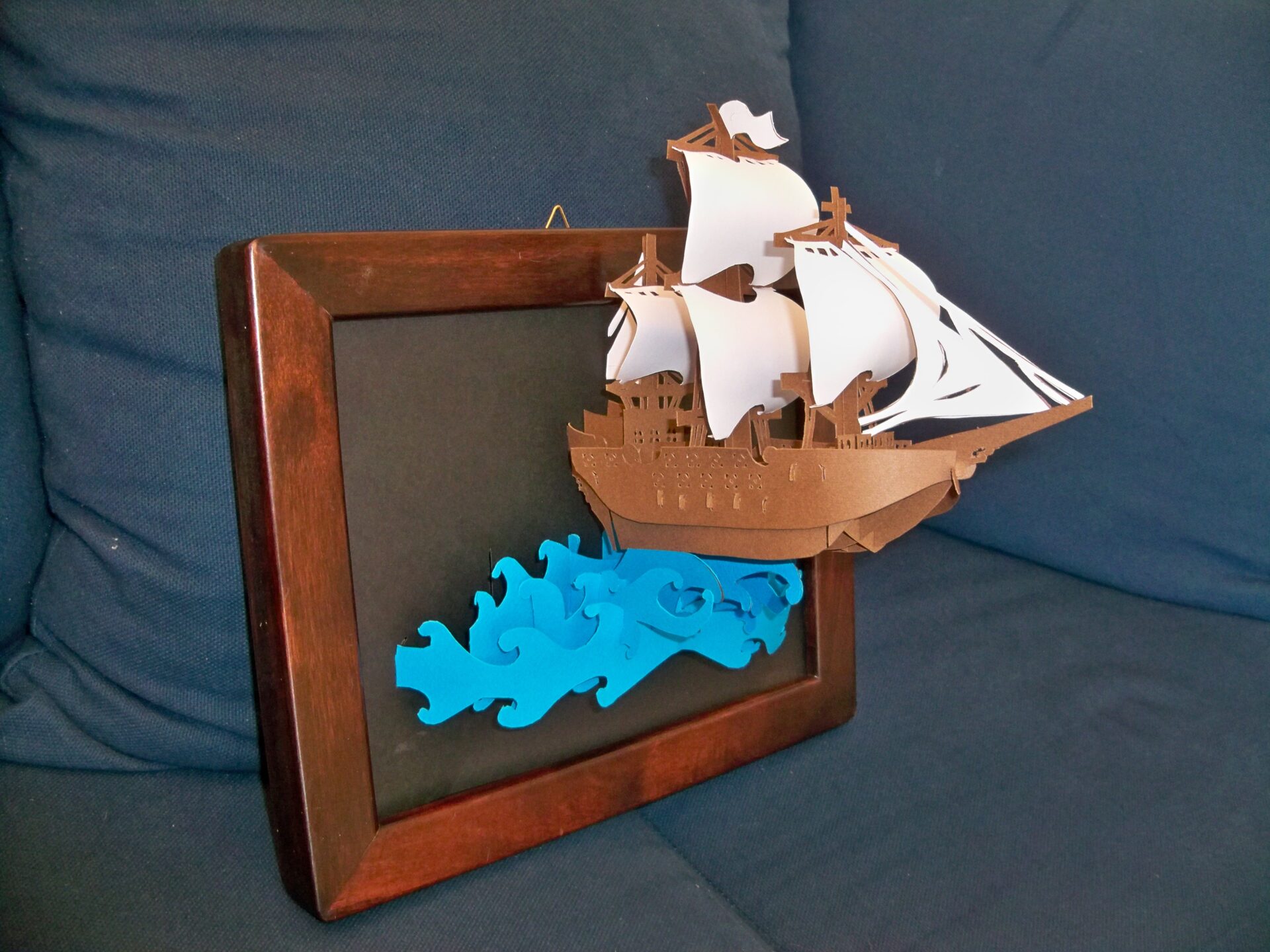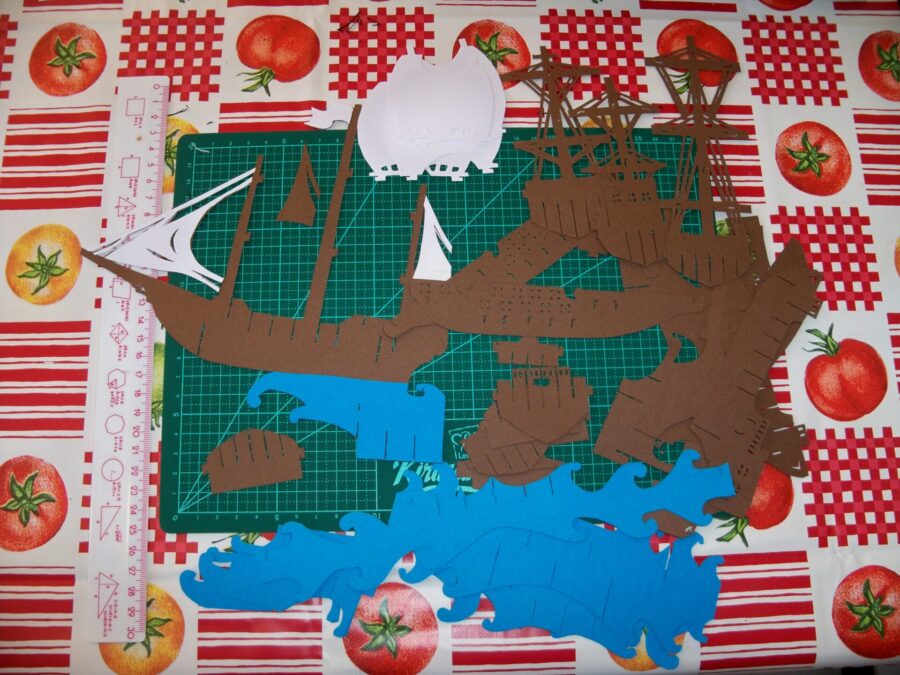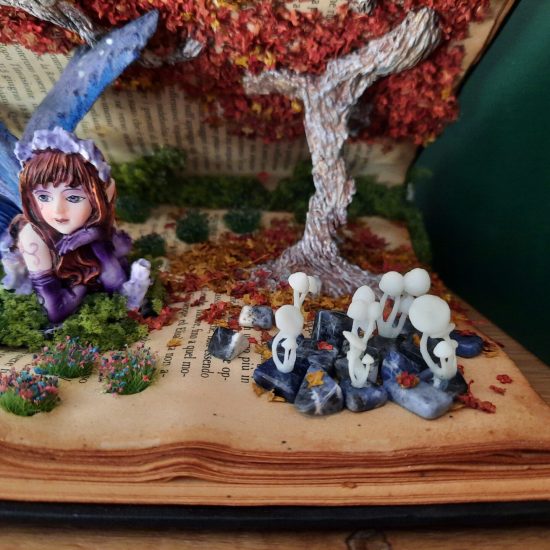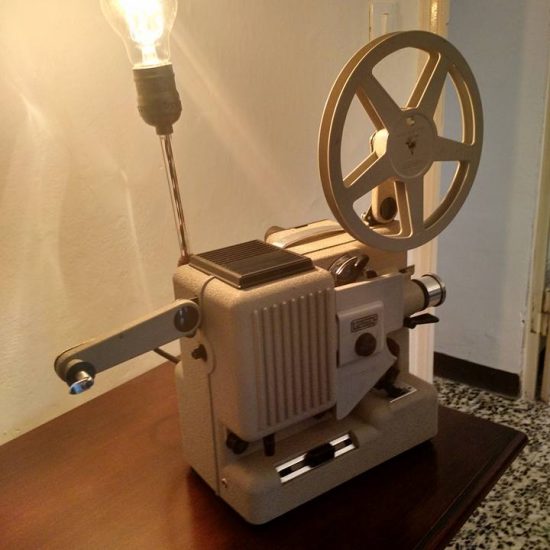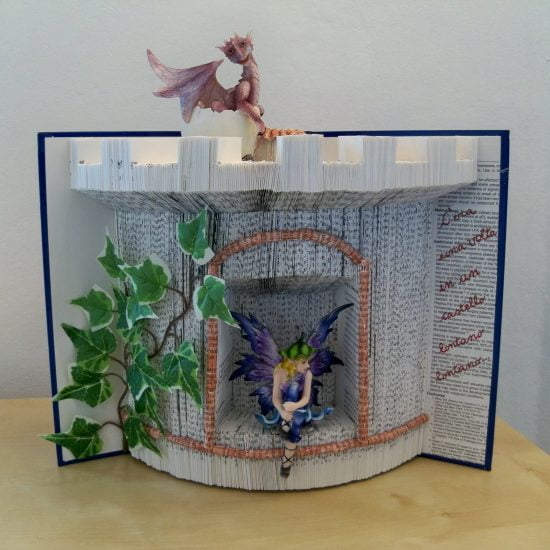In Summer 2015 I went with my mum on a trip to Paris. We couldn’t miss the Tour Eiffel, the landmark I prefer in the city. The day was hot and sunny, we were strolling along the Champ de Mars browsing the stalls.
Then one of them caught my attention.
A paper galleon emerged from a hanged frame, complete with foaming waves. It was just one of many artworks: historical buildings, people, plants, a whole world of paper. I remained long in front of that stall talking to the author of those marvels. He taught me this technique and gave me the instruments to begin making my creations.
This is how I got acquainted with the world of kirigami.
Click for the projects photogallery
Table of contents
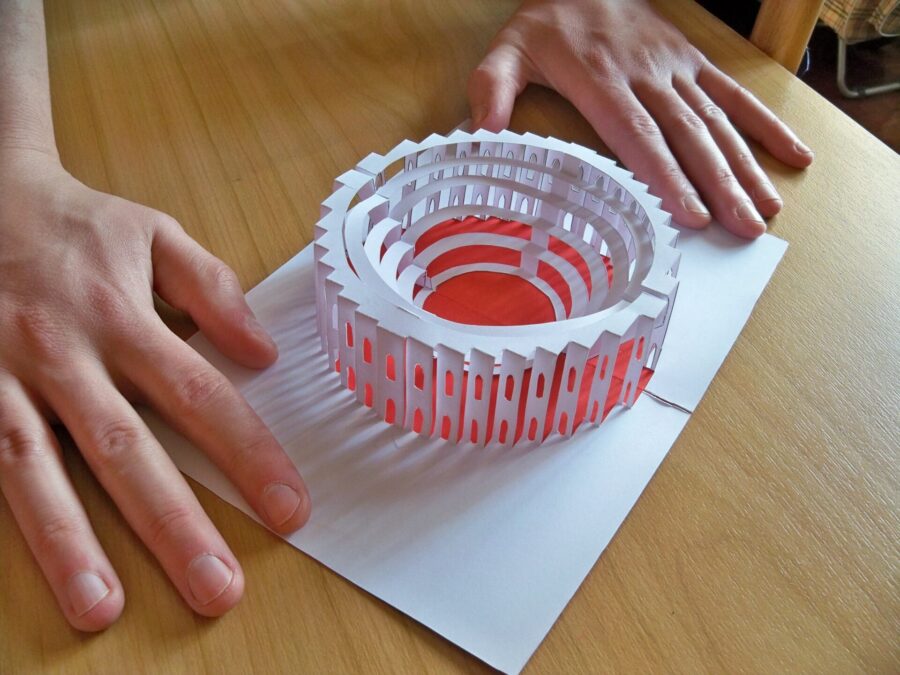
What is Kirigami?
Kirigami (from Japanese kiru = “cut” and kami = “paper”) is a Japanese technique of paper cutting and folding to obtain tridimensional elements, invented in the 80s by the Japanese architect Masahiro Chatani.
The main difference between kirigami and origami is that witn kirigami you can (well, you have to) cut paper.
To make a kirigami project you usually make all the cuts first, then fold and reopen your paper sheet to obtain the final figure. All the figures (could be geometrical shapes, architectures, landscapes…) take shape opening the paper sheet: you can make kirigamis with a 90° opening, or 180°, also 360°. With the 0° variants, you don’t fold your sheet of paper, you make just cuts, and the three dimensions come out placing all the pieces one on top of the other.
You can make easy pop-up cards, where the figure appears when you open the paper, or you can make complex works of art. The making of such sculptures when they represent architectures is also called “architectural origami“.
Kirigami offers endless possibilities in terms of design, ranging from simple geometric shapes to intricate sculptures and architectural models.
Artists can experiment with different cutting techniques, such as straight cuts, curved cuts or intricate patterns, to achieve various effects and textures in their creations.
One of the most captivating aspects of kirigami is its ability to transform a two-dimensional sheet of paper into a three-dimensional sculpture.
By strategically folding and unfolding the paper, artists can create dynamic pop-up structures, where elements of the design emerge and move as the paper is manipulated.
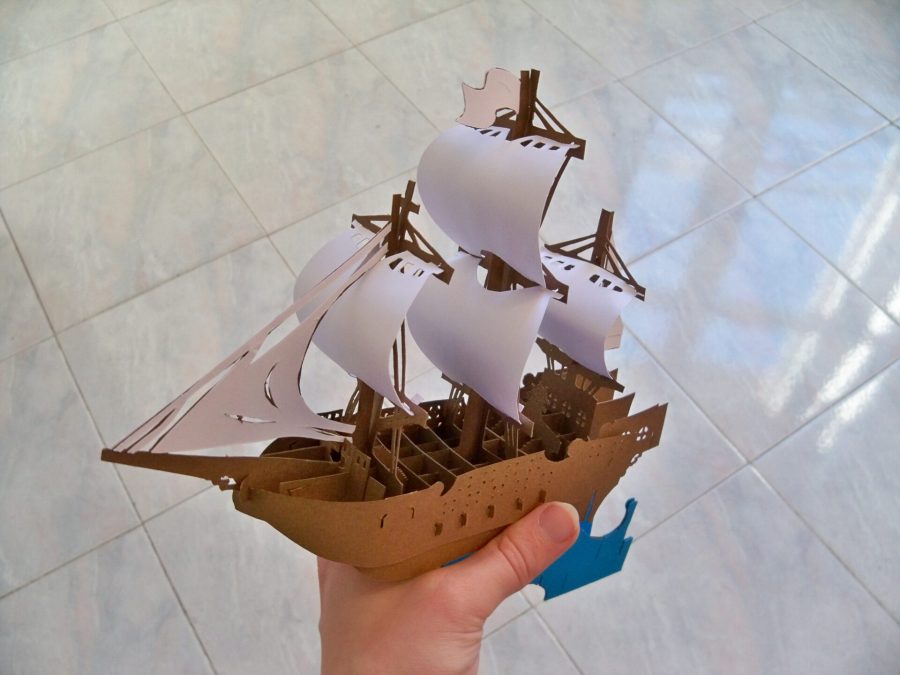
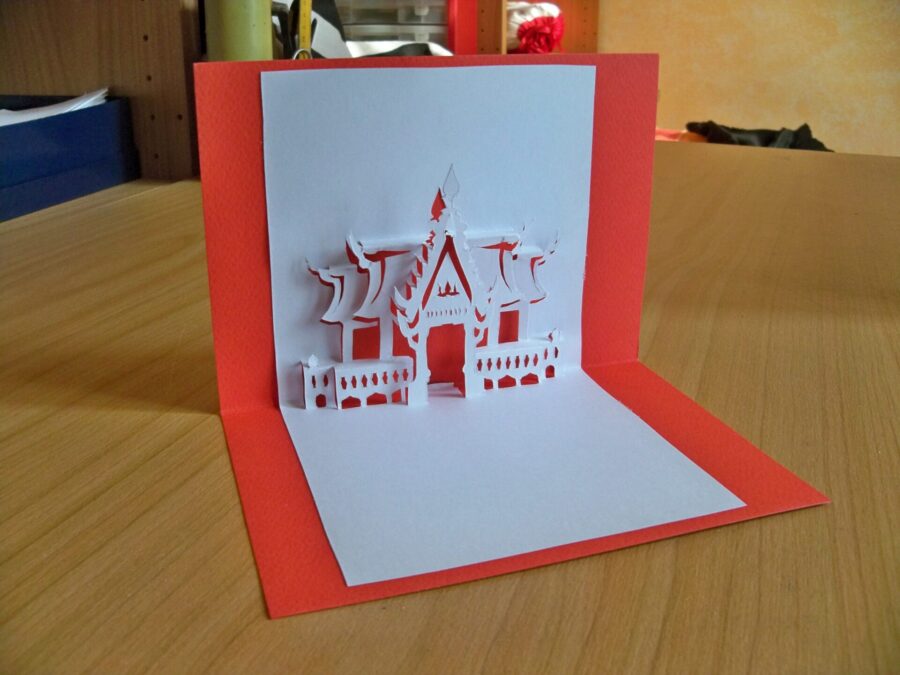
Kirigami and architecture: origamic architecture
Someone tried to combine the art of kirigami with modern technology. Some architects are even experimenting the use of kirigami in architectural design.
There are examples of kirigami drawn with CAD software and laser-cut, making more and more complex figures. Other architects are developing Artificial Intelligence systems that are based on kirigami to look for solutions to the most complex design problems.
The development of origamic architecture began with Professor Masahiro Chatani’s experiments in the 1980s with designing original and unique greeting cards. Masahiro Chatani was a Japanese architect and professor, who created origamic architecture while he was a newly appointed professor at the Tokyo Institute of Technology. Until his death in 2008, he was widely acknowledged to be the world’s foremost origamic architect.
A book by Masahirio Chatani
“Pop-up geometric origami” is a book by Masahiro Chatani and Keiko Nazakawa that you can download and read on Scribd.
Types of kirigami
Origamic architecture encompasses various styles and techniques, each offering unique possibilities for creating stunning three-dimensional paper sculptures.
Pop-Up Style (90° angle)
In this style, a folded paper is intricately cut so that when it is opened to a 90-degree angle, a three-dimensional image emerges, resembling the mechanics of pop-up books. This style is popular for its ability to create dynamic and visually striking designs.
180° pop-up
Similar to the 90° angle pop-ups, some designs require the pages to open completely flat to pop out the 3D image.
Punched Out Technique
Takaaki Kihara is known for his innovative technique where the three-dimensional structure is “punched out” of a flat card. This method creates interesting shadowing effects as the empty cutouts are visible, adding a layer of complexity and intrigue to the design. Additionally, this style offers practical advantages as the flattened forms can be easily stored and transported.
360-Degree Folding
Less common but equally fascinating, some designs require opening the paper and folding it completely in the opposite direction, forming a 360-degree angle. This approach allows for fully immersive and panoramic designs that captivate viewers from all angles.
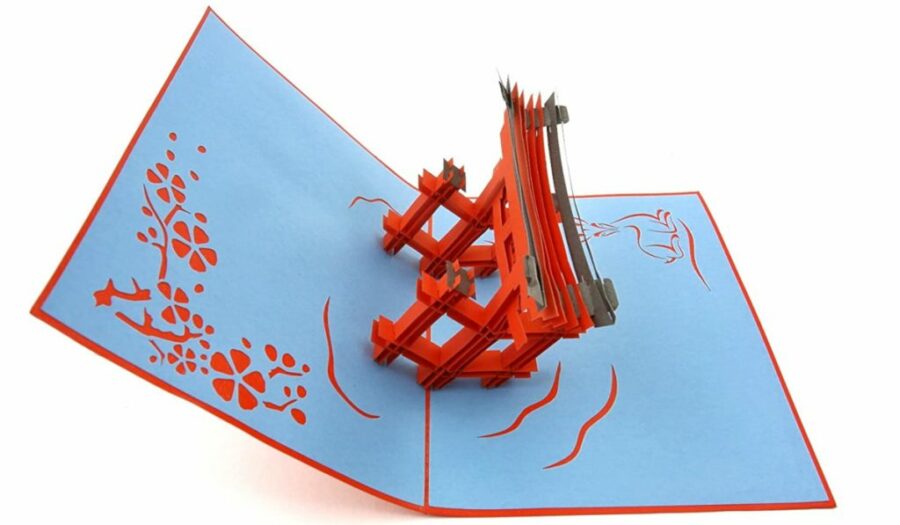
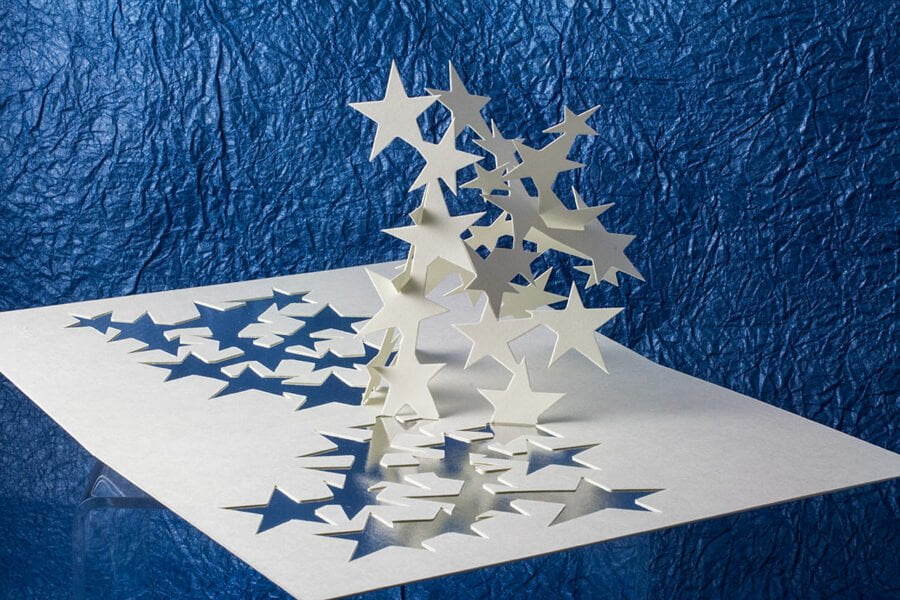
My Kirigami projects
I started experimenting with kirigami making that same galleon that caught my attention in Paris. A long and complex project to choose as my first kirigami, but I wanted it to be a birthday present for my husband. It took me a very long time to make, but in the end it came out exactly as expected, and moreover it’s been highly appreciated.
After the galeon, that somebody could consider not so strictly kirigami, I also made smaller classic pop-up cards.
More kirigami projects to make
The most popular example of kirigami is the pop-up greeting card, the easiest to make for beginners and common to find in gift shops.
Maria Victoria Garrido offers free printable kirigami patterns. They are complete with instructions and easy to make.
While reading a kirigami pattern, pay attention to how it’s drawn: the lines usually differenciate where you have to cut and where you have to fold.
It is better to use thick paper for printing templates. Make the cuts by helping yourself with a ruler.
A crafting tip. I use a proper kirigami knife, but any paper cutter would do the job. Use the blade to cut, and the back of the blade to trace the lines you have to fold: it will help you give a clean, sharp and straight fold.
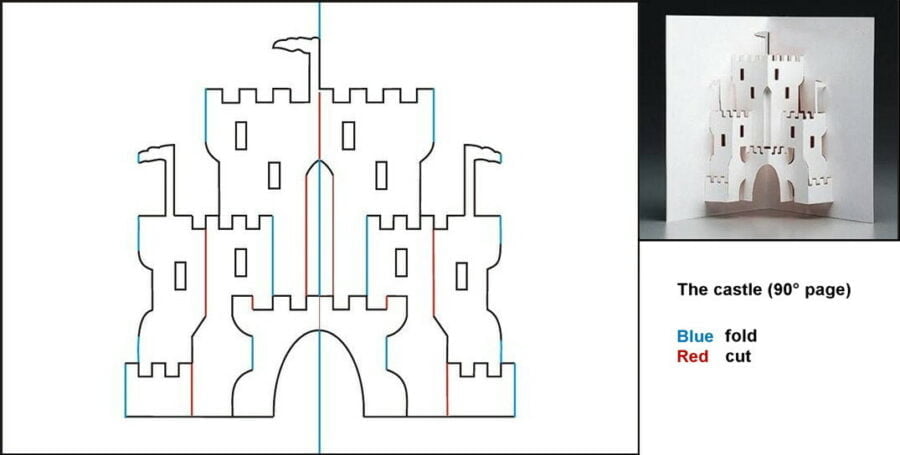
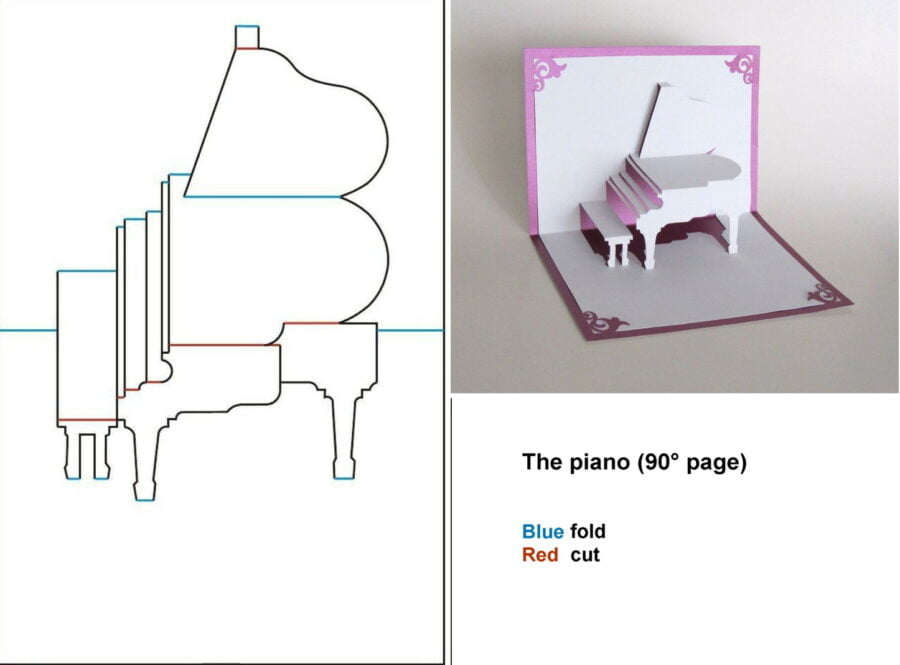
Looking for more ideas?
On Pinterest I created the “Kirigami” board to collect all the crafts I like, patterns and tutorials. Go pin what you like!
I didn’t make many kirigami projects, I have to say. This is one of many techniques I loved experimenting with, even though my crafts followed other roads. Well, I have to say it would be nice to come back to kirigami for new projects. A long time has passed, but in the meantime I acquired new crafting skills, so I wonder how it would be now.
What do you think? Should I make a new kirigami project? Maybe I should try designing something from scratch? I’m waiting for your opinions in the comments!

